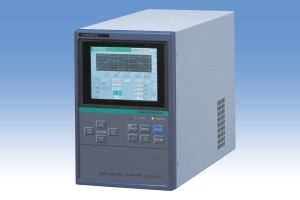Marty Mewborne, Sales Engineering Manager, Miyachi America
 Battery tabs have been getting more conductive and thicker over the last several years, as customers keep seeking better performance and higher currents from their battery packs. These thicker battery tabs are primarily made of nickel, but nickel-plated copper tabs are also being introduced due to their higher conductivity.
Battery tabs have been getting more conductive and thicker over the last several years, as customers keep seeking better performance and higher currents from their battery packs. These thicker battery tabs are primarily made of nickel, but nickel-plated copper tabs are also being introduced due to their higher conductivity.
Miyachi America has had success welding thicker tabs, but have found that the nickel-plated copper tabs can be very difficult to weld. In any case, adding slots and projections to the tab design is required as they focus the current and minimize current shunting.
Welding success also depends in part upon the nature of the battery itself. Those with thick caps can handle the high force and current needed to weld the thicker tabs. If the battery caps are too thin, you may deform or blow through them when welding very thick, conductive tabs.
We have had the most success welding the thicker tabs using the IPB-5000A Inverter, a resistance welding power supply that delivers superior welding control for a wide range of micro joining applications. It features 5 kHz fast feedback, and operates in constant current, voltage or power feedback modes. Voltage feedback is the typical mode of choice when welding battery packs, but the IPB-5000A Inverter can also weld in combo mode (current and voltage) to address even the most challenging battery welding applications. The IPB-5000A is capable of a maximum output of 6000 amps, making it well suited for welding thicker tabs.
Safety is another concern that should be considered when selecting resistance welding equipment for battery welding. For example, if not welded properly, chemicals in lithium ion batteries (in the news recently associated with the new Boeing 787 aircraft) can leak out and cause burns to eyes and skin. To avoid this, it is essential to use a closed loop power supply like the IPB-5000A, which includes features used to check weld resistance prior to applying the high welding current.
For thick tabs, Miyachi America recommends using an 89A/EZ Weld Head, an air-actuated weld head that is part of the Thin-Line series 80 weld and reflow solder heads, a family of precision, low inertia, force-fired weld heads with a narrow vertical profile.
The Model 89A/EZ, which offers 40 lbs. per electrode, allows independent adjustment of the left and right forces to optimize heat balance between the two weld nuggets. It is supplied with Dual EZ-AIR, a pneumatic control that actuates the electrodes and maintains a preset firing force. At the predetermined firing force, EZ-AIR automatically closes the inlet and outlet valves to the weld head actuation cylinders and eliminates overforce. EZ-AIR operates on 24 volts, AC or DC, and can be energized by most of the Miyachi America power sources, or by a Model FSAC footswitch.
In summary, welding the thicker, more conductive tabs used in today’s more efficient, higher capacity battery packs can be challenging, but welding success can be achieved by designing the parts correctly and selecting equipment that is best suited to the application.







